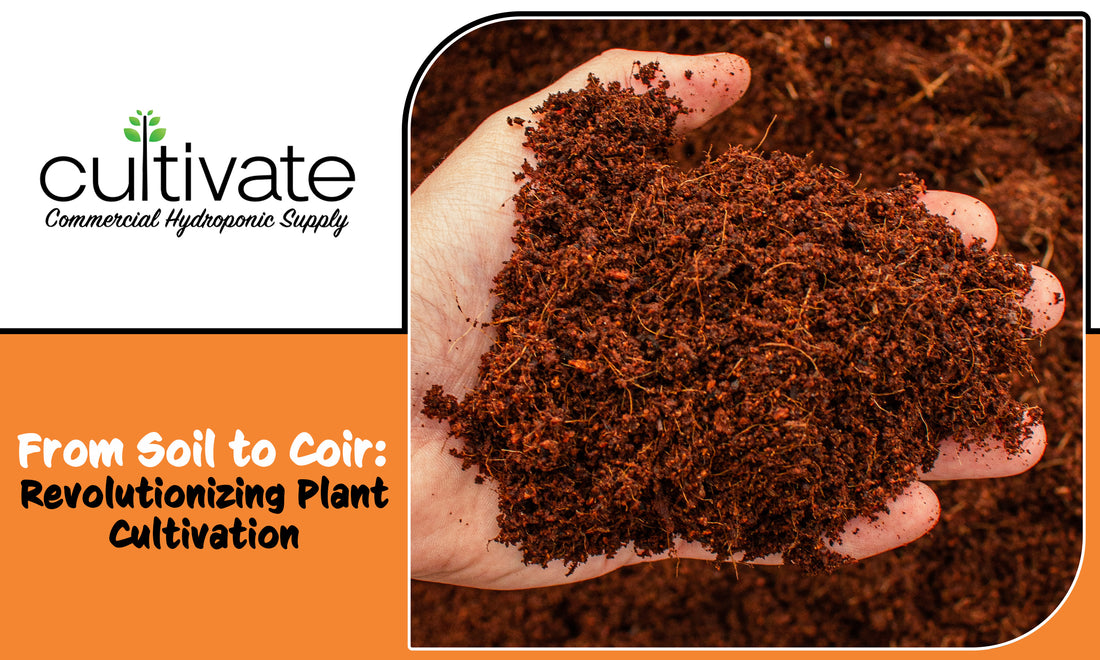Have you ever considered what's beneath your plants, providing them the foundation and nutrients they need to grow? For most, the answer is traditional potting soil. But today, we're going to explore an alternative that's rapidly gaining popularity among cultivators worldwide: coconut coir. Here's why you should consider making the switch.
- Excellent Water Retention: Coconut coir, derived from the husk of coconuts, is revered for its exceptional water retention capabilities. It can absorb up to ten times its weight in water, ensuring your plants stay well-hydrated. Additionally, it also provides excellent drainage, reducing the risk of waterlogging and root rot - a common problem in traditional potting soils.
- Environmentally Friendly: Coconut coir is a by-product of the coconut industry, which would otherwise be discarded. By using coir, you contribute to a circular economy that values waste reduction. Furthermore, it's completely renewable, unlike peat moss, commonly used in potting soils, which takes centuries to form and its extraction leads to habitat destruction.
- Neutral pH Level: Coconut coir has a neutral pH level, which is ideal for plant growth. This means fewer adjustments are needed to ensure your plants are growing in an optimal pH environment.
- Natural Pest Deterrent: Due to its unique composition, coconut coir is less likely to harbor garden pests, which are often found in regular soil. This minimizes the need for harmful pesticides, promoting a healthier growth environment for your plants.
- Long-lasting and Reusable: Unlike traditional soil that breaks down over time, coconut coir is incredibly durable and can be reused for several growing cycles. This not only saves you time and effort in changing the medium but also makes it a cost-effective option in the long run.
- Improved Aeration: Coconut coir provides better aeration for plant roots, enhancing their access to oxygen, an essential factor for root development. Better aeration can lead to healthier, more vigorous plants.
In essence, coconut coir provides a sustainable, user-friendly alternative to traditional potting soil. It caters to the essential needs of plants while also prioritizing environmental sustainability and ease of use.
For cultivators aiming for optimal plant health, environmental responsibility, and operational efficiency, coconut coir represents a future-proof solution. It’s not just about growing your plants, it's about growing them better, smarter, and more sustainably.
Elevate your cultivation journey with coconut coir and experience the difference. You, and your plants, will be glad you did!

Coco coir is an extremely versatile medium that can be used on its own or in combination with other components to create an incredible soil blend like Growers High porosity.
But getting coco coir on its own can be a tricky process. If you’re trying to make your own blend and want to save costs on the coco coir you need to do it, you could end up hurting yourself and your plants in the end by not choosing the right options.
COCO COIR BRICKS
You have probably seen coco bricks at your local grow store, after all the packaging is pretty easy to recognize, it’s a brick. But not all coco coir bricks are created equally, and we mean that literally.
When shipped raw, coco bricks are highly variable, and typically never the same. There may be random EC/PH fluctuations per brick, other bricks might need to be to processed again and you also have the task of rehydrating the coco before being able to use it.
With the risk of variation between bricks, buying coco coir bricks in bulk can be risky if you don’t have the proper tools to re-process them if necessary.
UNBUFFERED COCO
Unbuffered coco coir is basically coco that is natural. That doesn’t sound like a bad thing right? Except some the nutrients that come naturally in coco aren’t great for growing plants, and they need to be buffered before you can use it.
In other words, unbuffered coco fiber has not been released from its high sodium, chloride, and potassium charge. That high potassium charge does not mix good with other fertilizers which can cause lockout and other problems.
You may save a couple bucks with a bag of unbuffered coco, but the costs will come back when you need to buy the proper supplements to buffer it before use.
GROUND COCO
The downside to commercially available coco coir is that if you don’t get in the forms already mentioned, it may come ground up. This is a standard for a lot of coco producers, but it has some downsides.
The main pitfall of ground coco is that the process of mechanically pulverizing coco decreases the oxygen and moisture holding capacity of the medium, which needs to be accounted for with additional components to get those properties back. Growers High Porosity contains coco coir that isn’t pulverized, but gently broken down to maintain its long fibrous qualities, moisture holding capacity and oxygen content.
In addition to this process, we also include peat and perlite to complete the High Porosity blend. This helps to aerate the soil even more while still maintaining incredible moisture holding capabilities.
Avoid the hassle of buying coco coir from an untrustworthy dealer across the ocean, having to buffer your own coco or break down the bricks, and grab a bag of Growers High Porosity instead.

